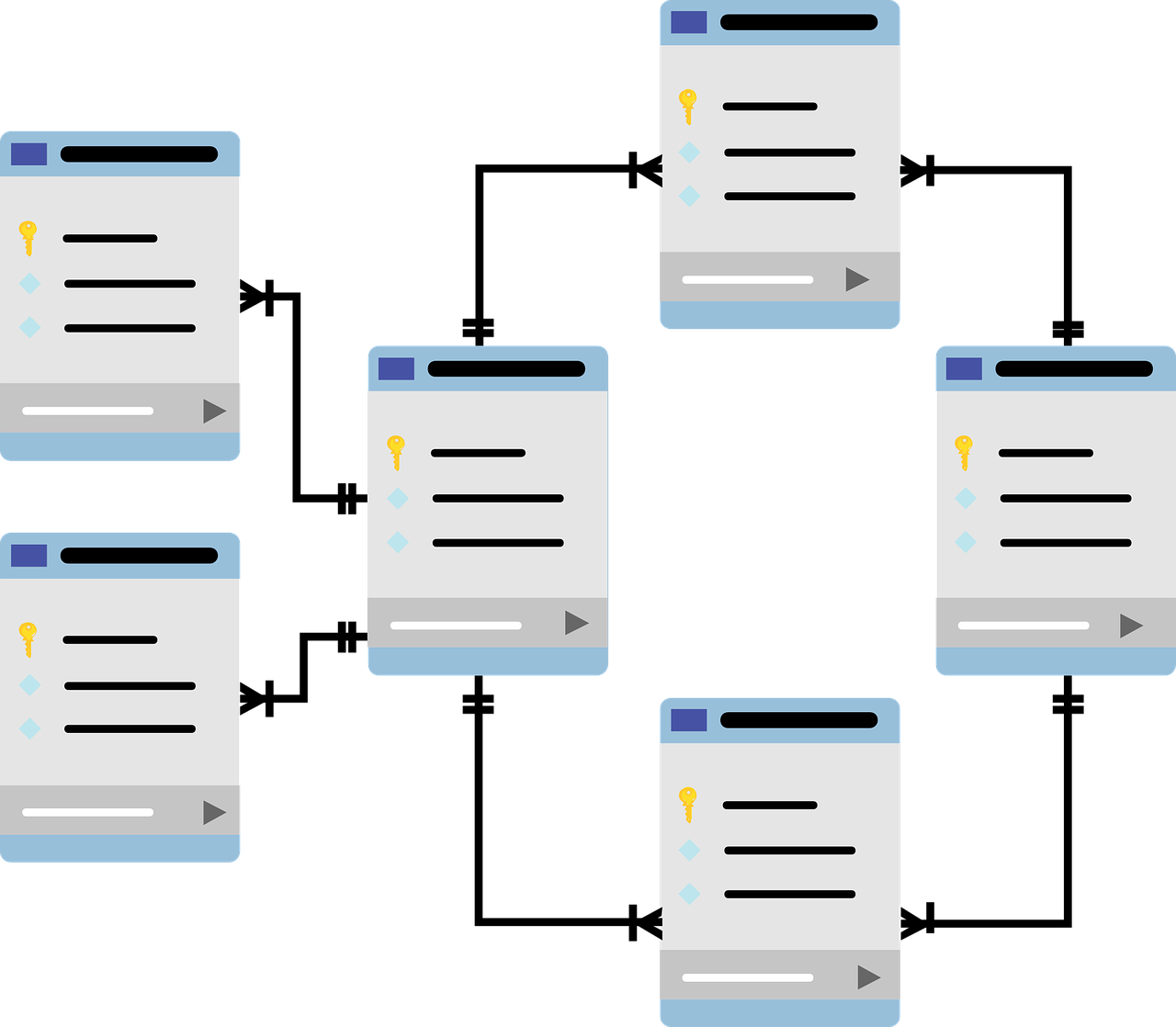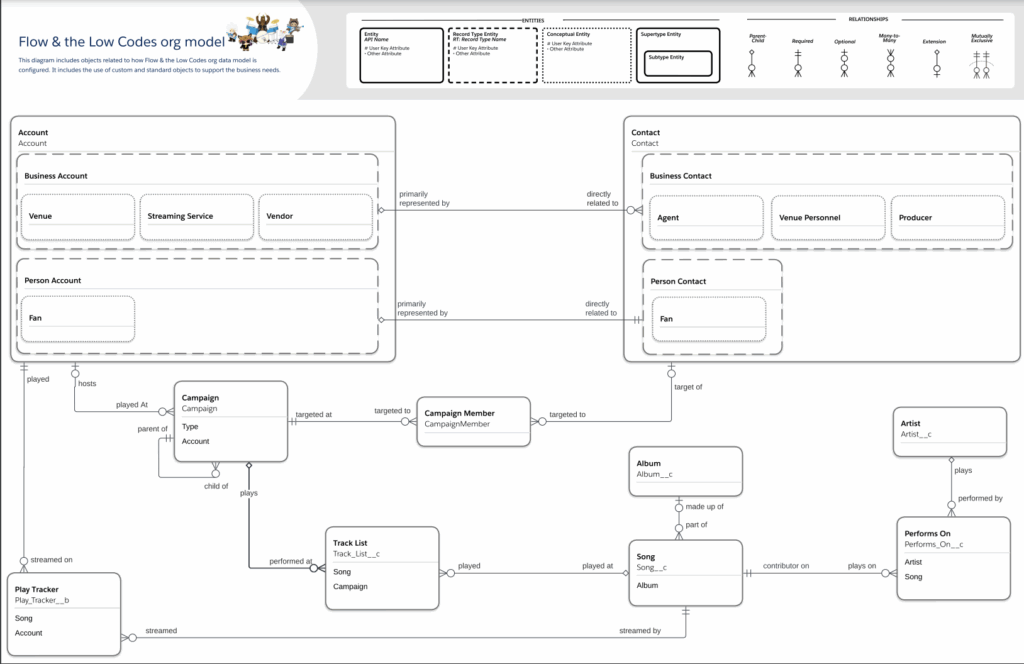
When I first started my career in Salesforce, I remember staring at an Entity Relationship Diagram (ERD) and thinking, What in the world am I looking at? I saw boxes, lines, and arrows, but I didn’t really see the system behind them. Now that I’ve gotten comfortable reading ERDs, I want to share what I wish someone had told me. I’m using a real life example from a music streaming and event management data model I worked with in a Trailhead challenge.

What is an ERD?
An ERD (Entity Relationship Diagram) visually maps out objects and how they relate to each other. Think of it as a blueprint of the data architecture, what data lives where, and how it connects.
Step 1: Spot the core objects
Let’s break down the objects from this example:
Standard Salesforce Objects:
These are objects that come out-of-the-box
- Account: Represents organizations or people (Fans, Vendors, etc.)
- Contact: Represents individuals tied to accounts
- Campaign: Used for outreach or promotions
- CampaignMember: Connects Contacts to Campaigns
Custom Objects:
Custom objects are used when standard objects can’t fully represent your business scenario.
- Song__c: A single track
- Album__c: A collection of songs
- Artist__c: A performer or group
- Track_List__c: Maps songs to albums (like a track listing)
- Performs_On__c: Junction object connecting Artist__c and Song__c
- Play_Tracker__b: Tracks when and where songs were played (streaming or live)
Junction Objects:
A junction object connects two objects that have a many-to-many relationship.
- CampaignMember: Links Contact and Campaign
- Performs_On__c: Links Artist__c and Song__c
- Play_Tracker__b: Tracks who played what, where, and when
Step 2: Trace relationships
Arrows show direction and labels describe the relationship
- One-to-Many: One record on one side relates to many on the other (ex: one album has many songs)
- Many-to-Many: Both sides can relate to many records (ex: many artists can perform many songs)
- If a middle object (junction object) is involved, it’s usually many-to-many
Step 3: Understand how they all relate
- An Album (Album__c) is made up of multiple Songs (Song__c)
- A Track List (Track_List__c) defines the order and grouping of songs on an album
- A Song is performed by one or more Artists (Artist__c), and vice versa. This many-to-many relationship is modeled using the junction object Performs_On__c
- Play_Tracker__b tracks when a Song is played:
- By an Account (usually a fan or user)
- At a Venue or on a Streaming Service
- Campaigns target Contacts (ex: fans or agents), and CampaignMember links them together
- Subtypes like Fan, Agent, or Venue Personnel are modeled using Record Types or custom fields
Pro Tip:
Once you see the relationships, turn them into real world use cases. For example: “A Fan streams a Song performed by two Artists, and that performance is tracked in Play Tracker.” That’s how you make the diagram come alive.
I used to feel overwhelmed by ERDs. But once you understand the basics, what the objects are, how they relate, and which ones are custom, it starts to click.
Whether you’re building a new solution or trying to debug something in Salesforce, knowing how to read an ERD can save you time and confusion. Think of it as your data blueprint and a secret weapon every Salesforce pro should have.
